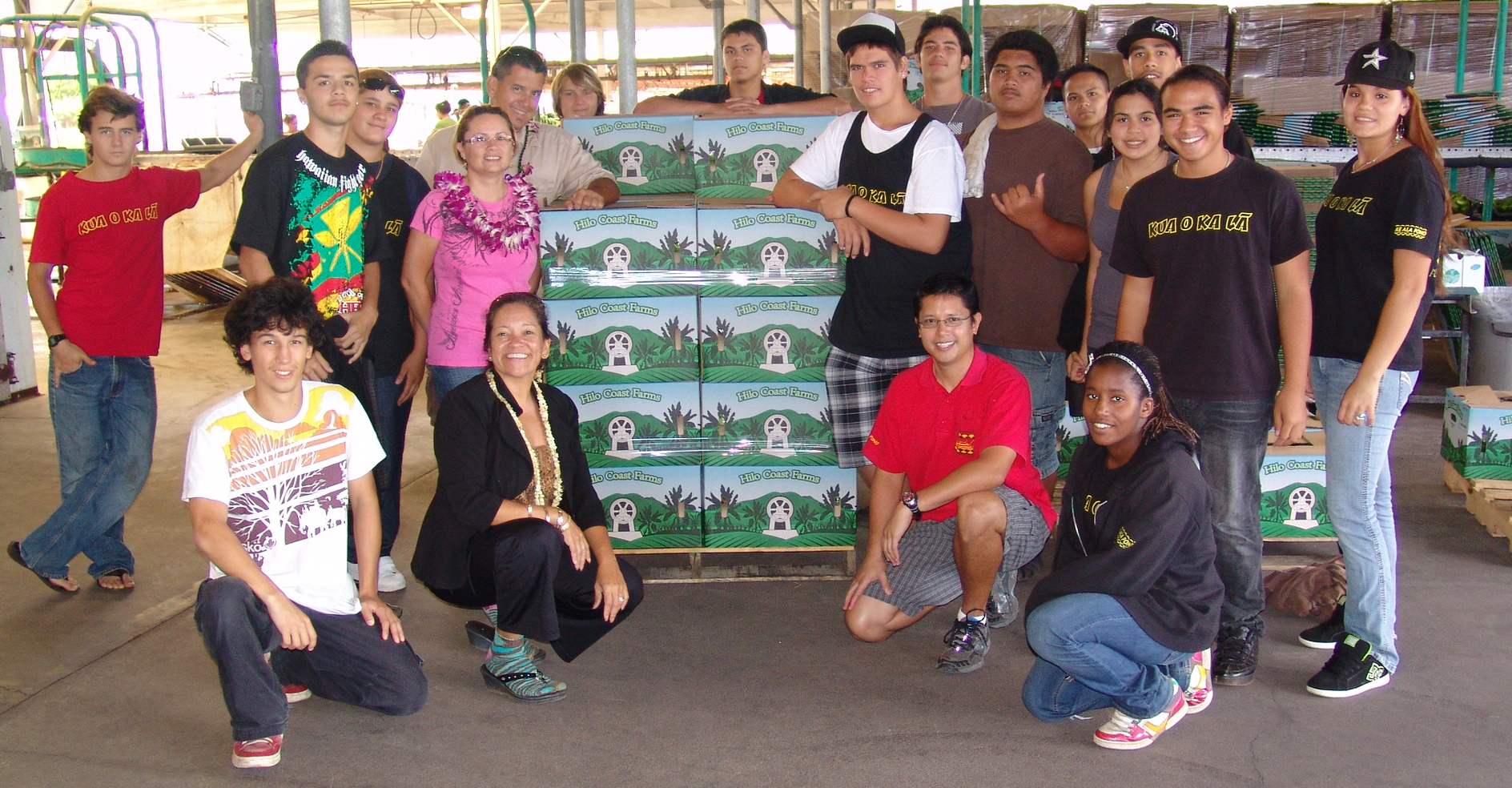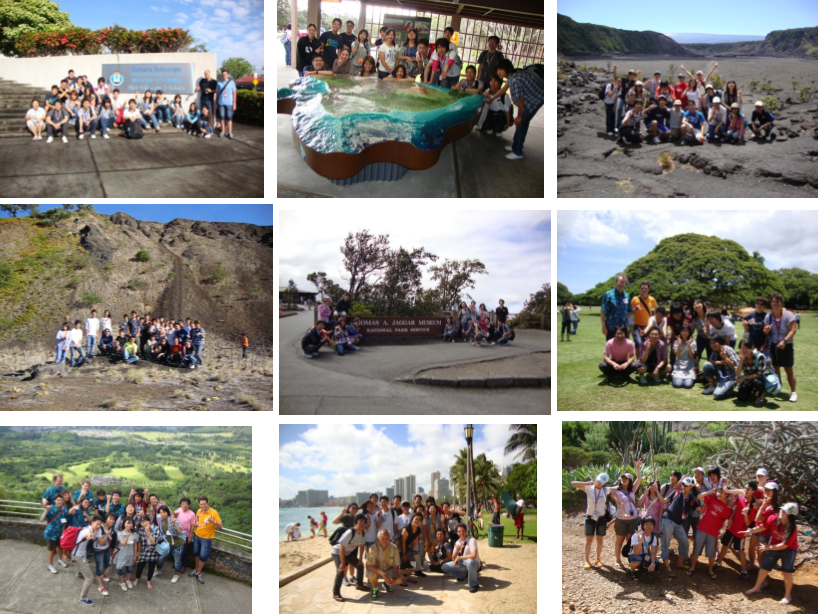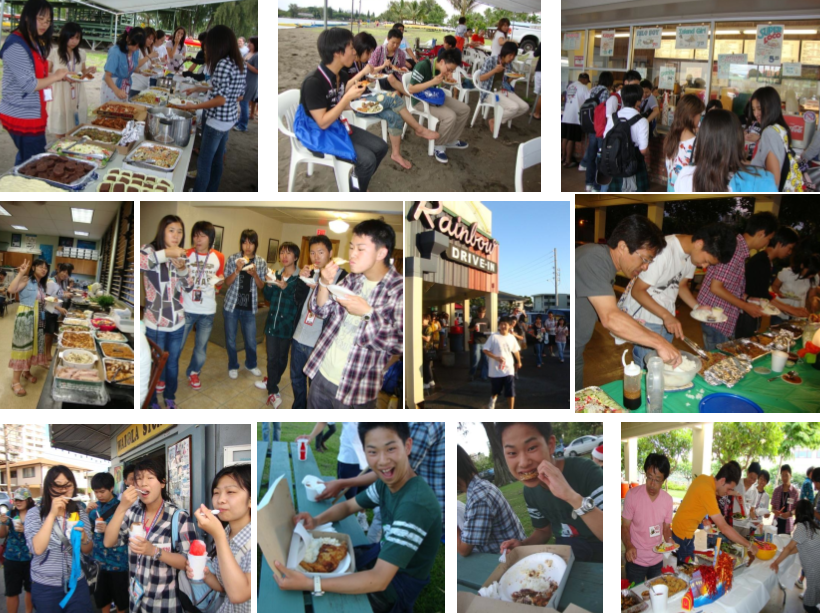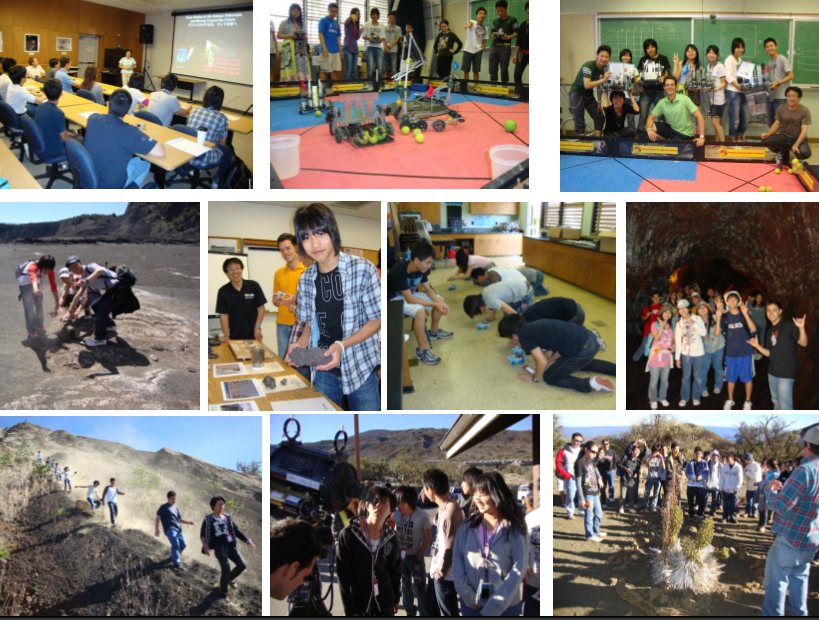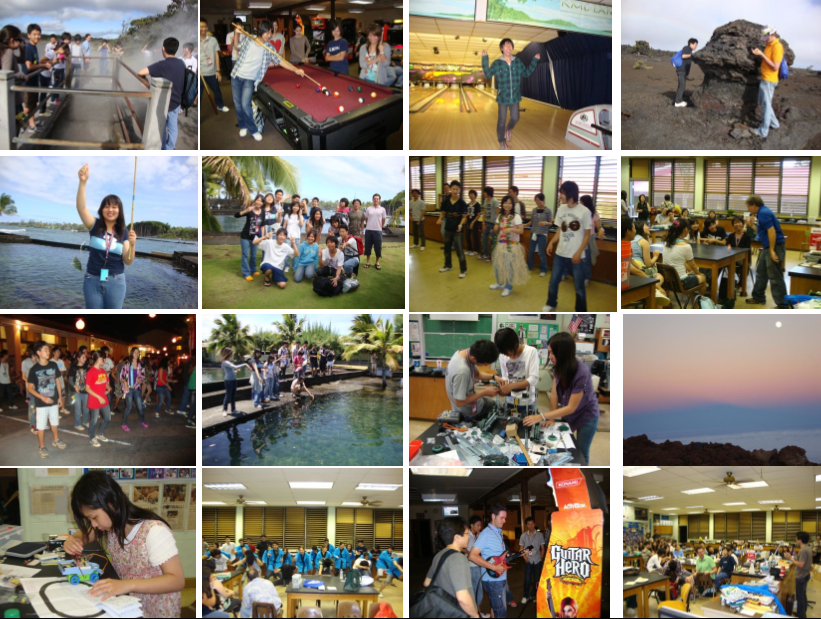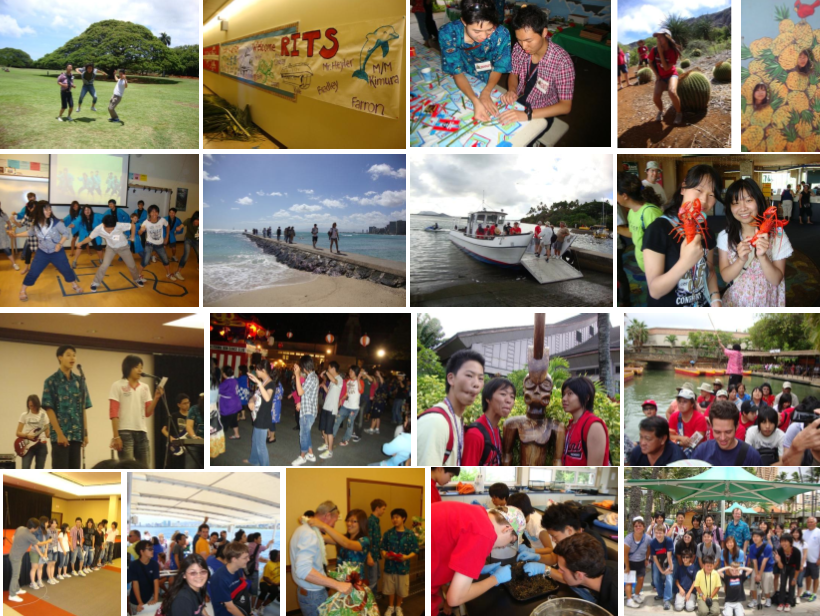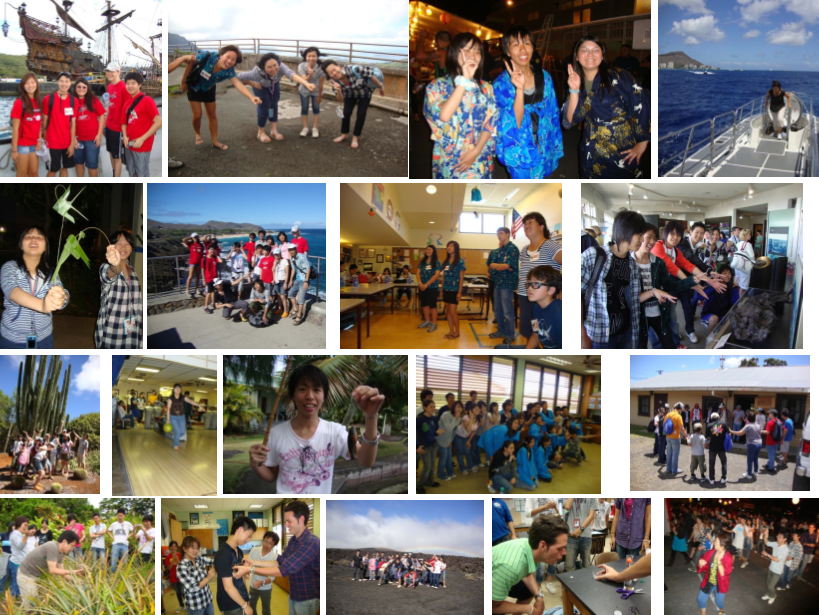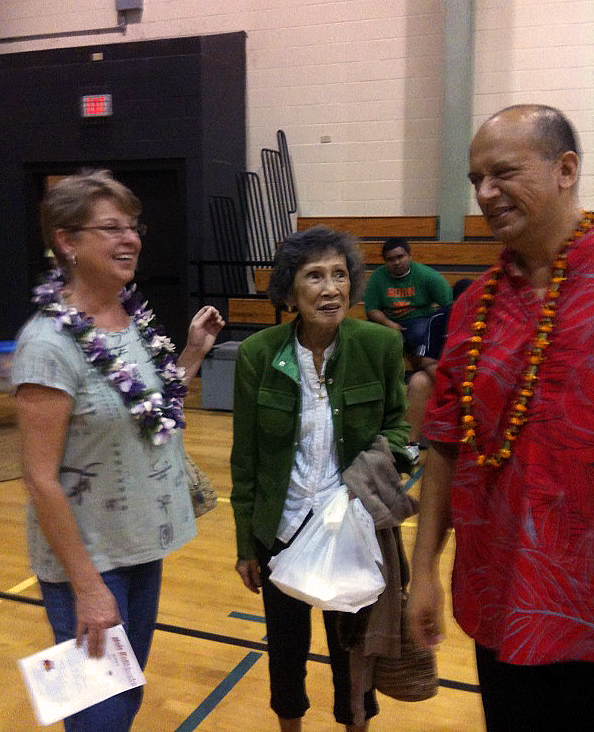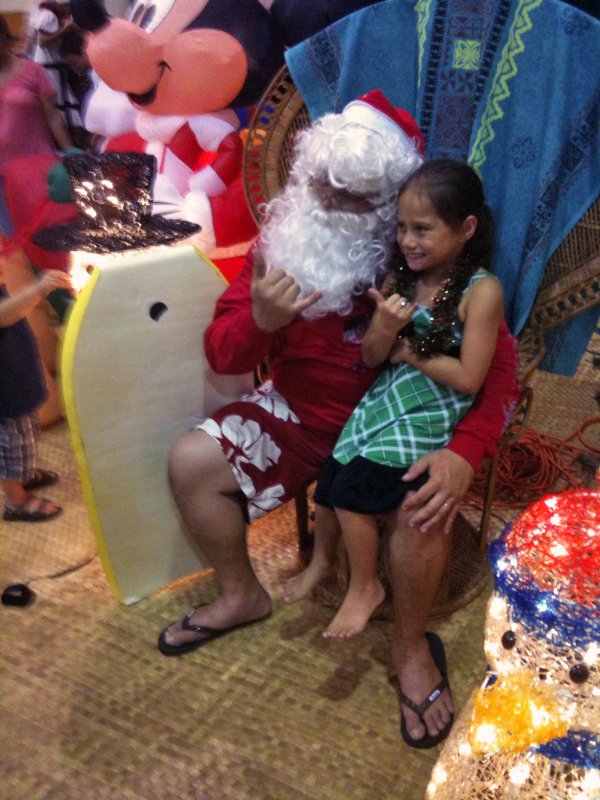White water coming! My pop asked me: “What you going do?”
“Climb up the bamboo pole,” he said.
Fast forward to now. Oil price rising to damaging levels; what we going do?
“Buy HEI, and help HECO focus on core values!”
Get thousand reasons why “No can,” my pop always said. “I only looking for the one reason why CAN!”
We can do this, all while achieving the long-term social results we need.
I was asked to speak at Keauhou last week, at the Kamehameha Schools First Nation Fellows Program of future community leaders.
The topic was food sustainability. I told them that food security has to do with farmers farming, and if the farmers make money the farmers will farm. I told them that there is no magic bullet but that if a group of farmers can organize around an energy source, it can help them gain a competitive advantage.
This is what we hope to do around our hydro electric project. And it’s why I push for cheap electricity for the larger society through geothermal.
Yesterday the Fellows visited our farm, and I got to show them what we are doing on the ground that relates to my talk.
The basic principles I shared at Keauhou are those I outlined in the following speech.
From this blog in May 2007:
CAN!!!
I was asked to give the commencement speech at the Hawai‘i Community College graduation last week. I immediately thought of stories my dad told me when I was growing up, and how they affected me all of my life.
Here’s a copy of my speech:
***
Good evening, graduating students, parents, teachers, Chancellor Freitas and visiting dignitaries. Thank you for inviting me to speak.
Tonight, instead of giving you a regular speech, I want to tell you stories of what I think helped influence me along the way. Hopefully it can help you as well.
I believe that: If you can imagine it, you can do it! And you can do it without sacrificing your core values along the way. Being street smart is the way to get there.
I flunked out of UH Manoa and was drafted into the Army. I applied to go to officer candidate school and volunteered to go to Vietnam. I was not the best student, but I had common sense.
After I left the service, I went back to school and got a degree in accounting. I kept all my core values and was able to reach several of my long-term goals, and am still working on many others. To me the most important things are:
1. Follow your dreams.
2. Look for several solutions to each potential problem, and then look for one more, just in case.
3. Do not sacrifice your core values for any reason.
At the dinner table, Dad would tell stories. He was a farmer then, but he did a lot of other things in his life. He would tell stories about taking on huge projects with large obstacles and unbeatable odds. He always figured out a way around the problems.
He would always say, “Not, no can!!” (pound the table) “Can!!!!” (pointing his finger in the air). And the dishes would bounce off the table.
He would go on to say, “There are a thousand reasons why ‘No can.’ I am only looking for one reason why ‘Can!’”
Those words, “Not, no can!!” (pound the table) “Can!!” stayed with me all my life.
Although “Not, no can! Can!” was the thing that stood out in my mind for many years, much later I realized that it was the way he taught me how to be a survivor that made it possible for me to make “Not, no can! Can!!” work.
It is easy to say it and it is dramatic. But how do you actually make it work? And how do you make it work without sacrificing your core values along the way?
These stories that Pop told helped me visualize solutions to problems before they occurred. He taught me how to be a survivor.
Some people call what he taught me “street smarts.” Others call it “common sense.” If you have to pay someone to teach you how to do this, it’s called “contingency planning.” Whatever it is called, I learned how to do that.
1. He told us kids about aholehole fishing at night with a couple of friends on the tip of a rocky point. It was at my tutu lady Meleana Kamahele’s place down Maku’u. There were no collapsible poles back then—they used long, two-inch-around real bamboo poles. They had lanterns shining on the water when he saw, in the darkness, white water coming! The wave came in and pounded on the rock where they were standing, and covered everything. He told me, “I climbed up the bamboo pole, hand over hand, and lifted my legs up and the wave passed right underneath.” His two friends ended up in the water and he helped get them out. It captured my imagination. What a story and what an impact on a young kid.
2. You are driving 55 miles per hour and a dog crosses the road in front of you. “What you going do? It’s going to happen so fast that you have to know ahead of time what to do.” You have no time to look in your rearview mirror; you can drift to the left as long as there is no car coming; you can drift to the right depending on the road shoulder. You can tap your brakes, but only so far before you start to risk the driver in the back. “What you going do?” Pop said.
“Press the gas and run ’em over.” I did not understand at the time. But he was saying, rather than risk human lives, you should press the gas and eliminate the chance of doing something wrong.
When I think about it now, he was saying: to avoid the chance of doing something stupid, run over the dog. Hard to do? Life is hard. Sometimes you gotta make the call. You don’t want to hesitate and hurt somebody else. He said it was okay if you kill yourself. But not okay to kill somebody else.
These were lessons in being prepared for emergencies and being prepared for life. And as a result it became second nature to me. And I would always go through “what-if” scenarios in my mind. So if a situation occurred, I always had several alternatives worked out in my mind. It became second nature with me.
I can remember two times when it might have made the ultimate difference. The first was in a rice paddy in Vietnam, when a sniper opened up on us. We ran and jumped into a small depression next to a thatched hut. When we hit the ground we realized there were three guys already hiding there.
I knew that this was not good; one grenade could get us all. So I grabbed my radio operator and told him, Let’s go. And we ran for cover a short distance away. Bullets flew all around us. As soon as we hit the ground we heard a loud whump! A grenade had been thrown right into the place we left. Street smart? Common sense? Whatever! It helped me do the right thing.
The second time was when I was in Texas, flying at 100 mph down a two-lane road, top down, in my 62 ’Vette. All of a sudden there was another car overtaking, and there were three of us on a road meant for two. “What you going do?”
I immediately flipped my blinker to the right and started to slide over, communicating nonverbally. I did not give him time to make the wrong move. Three of us flew past each other with inches to spare. I knew exactly what to do. I did not even get nervous. I just looked in the rearview mirror and nodded to myself: Yep. ’At’s how!
I did not realize until much later that this street smarts, common sense, contingency planning thing is what made it possible for me to implement: “Not, no can! Can!!” When you have long-term goals, you are faced with short-term decisions along the way. Making the wrong short-term decision will hurt you in the long run if it causes you to give up your core values. Sometimes, you just have to press the gas and run over the dog in order to keep your core values.
You can keep your core values and make the right short-term decisions if you have street smarts. When you are street smart you will figure out just how far you can go toward your long-term goals without causing yourself too much damage. You will know how much room you can give yourself so you don’t have to sacrifice your core values.
If you cannot find a solution that will allow you to keep your core values, no matter how tempting, don’t give up your core values. Remember: “Not, no can! Can!!” You can find that solution that will allow you to keep your core values.
But to balance things off, in case someone misinterpreted Pop’s generosity, he would lean forward and say, with a clenched fist and a mean face, to an imaginary person: “No Mistake my Kindness for Weakness!”
I can tell you right off that your core values are worth fighting for, and if you’re street smart you can figure out how to make the right decisions, even if there is a short-term disadvantage. In the long run, it is how you are able to keep your core values that will define you. It’s not money; it’s not fame.
Some of the important core values are:
1. Your family is most important.
2. Taking care of the keiki now, and a hundred years from now, is most important.
3. Your good friends are most important. I said good friends; I did not say bad friends.
4. Your word is most important.
5. Taking care of the most defenseless around you is most important.
6. Leaving no one behind is most important.
7. Taking care of your community is most important.
8. Taking care of the environment is most important.
If you’re street smart, you can figure out how you are going to reach your long-term goals without sacrificing your core values.
So when you see white water coming, climb up the fishing pole and lift up your legs. You don’t want to. But sometimes you just have to run over the dog. If you can remember these things you will know what I mean when I say: “NOT, NO CAN!” (pound the table) “CAN!!”
Thank you, and good luck, everyone.
I seemed to hit my target audience well. I could see the guys really engaged. Some of the girls were more interested in talking story, but a strong-looking Hawaiian girl was waving her fist and yelling, “Right on!”
At the end, when I said, “Not, no can! Can!” and pounded the table, they yelled with me, “CAN!!” It was fun.
At least 10 students coming through the line afterward commented and even thanked me for the speech. They had to shake hands with maybe 10 people, so it was hard to make comments. But some did. I was pleased.

